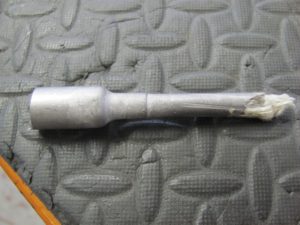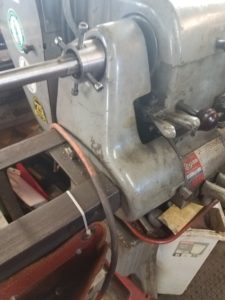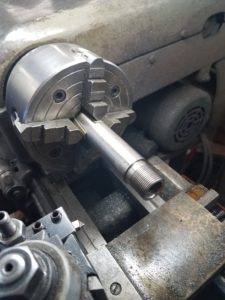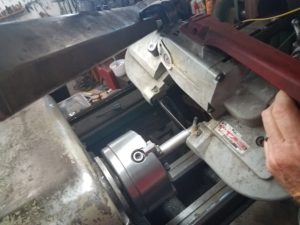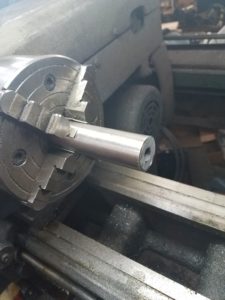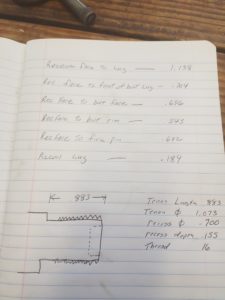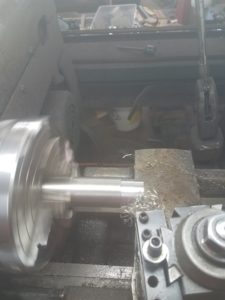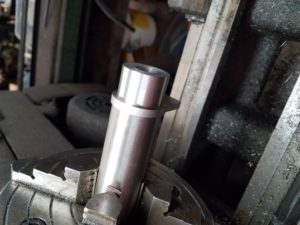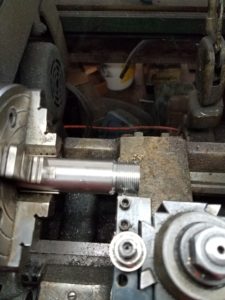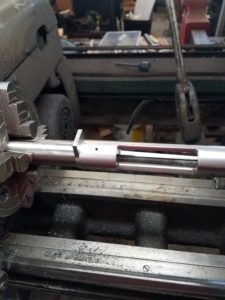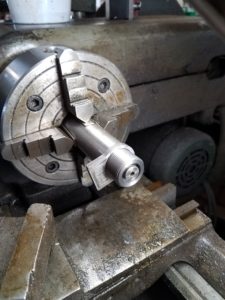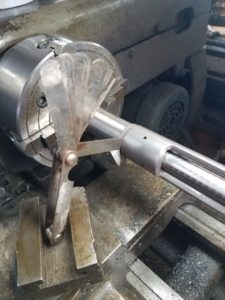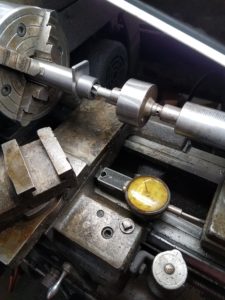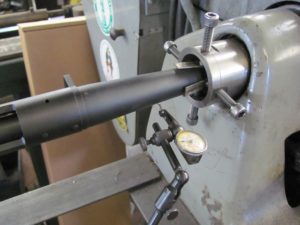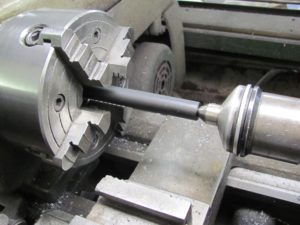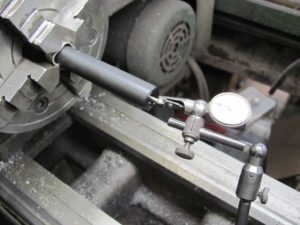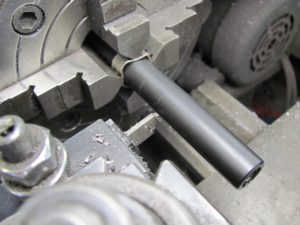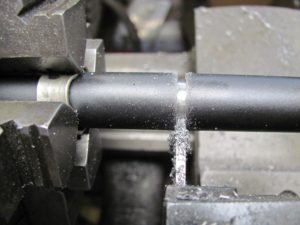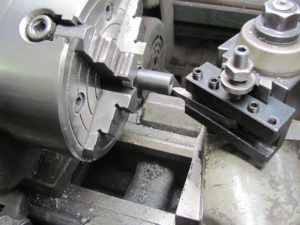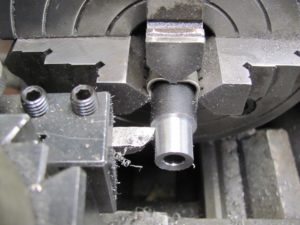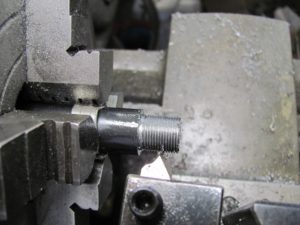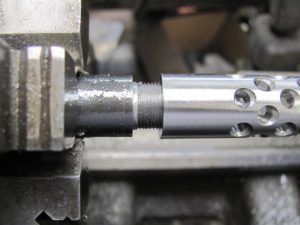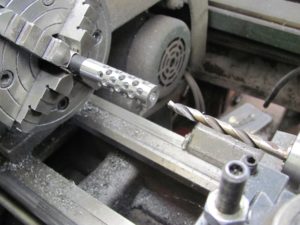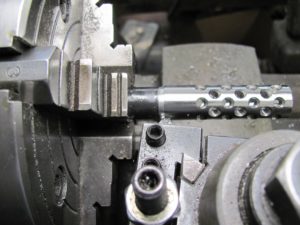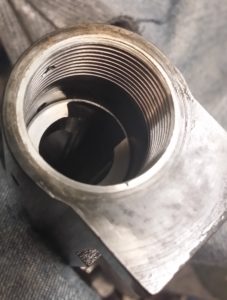The Importance of Bedding Rifles
Some people know where the bedding is located, others have all sorts of ideas about what it does but rare is the person with a good working knowledge about bedding.
Maybe we should start with what it isn’t. It doesn’t cure any of the problems that are anywhere else. When you bed a rifle with a bad barrel, bad crown, crooked chamber or bolt it still has problems. As you will find out when you chase accuracy problems, accuracy doesn’t improve until you fix the last problem. Many customers come in the gun shop seeking miracles in the form of a bedding job. If the gun is shooting huge groups it probably won’t be bedding.
What a good bedding job will do is stabilize groups so that the gun will keep the same zero and sometimes tighten groups that are not round. An example might be the gun that shoots groups 1″ tall and 3″ wide. It might be the barrel settling in a different spot where it touches inside the forend. The real job we ask bedding to do is give the rifle action a perfect fit to the stock in the areas that bear the stress of recoil and attachment. This means behind recoil lugs and under the receiver especially around the guard screws or whatever holds the rifle in the stock. It should be a perfect mirror image of the receiver area and not allow any movement of the receiver but also not place any stress on the receiver. As tough as you might think this receiver is it still can be stressed in such a way that it will affect accuracy. When you consider that a small imperfection can be close to one guard screw, let’s say 1/4 inch behind the front screw. Now the front screw is tightened 50 inch pounds. This causes the rear of the receiver to raise. Now the rear screw is tightened and the receiver bends and flexes as the rear screw with the help of compound leverage from the position of the imperfection and the added effect of the inclined plane of the screw threads put tremendous pressure on the receiver. Don’t forget this was the receiver you labored over for many hours to make sure everything was square and in line. Okay, now you know why you need good bedding!
Let’s look at some of the things that go with synthetic bedding jobs before we start mixing the epoxy! One of the first things to decide will be is this a good idea. Plastic synthetic stocks that are made out of polyethylene plastic are not good candidates for epoxy bedding. This material will not bond with epoxy and the bedding will pop loose from the stock unless anchor holes are drilled in at an angle and these holes filled with the epoxy when applying the bedding. This is a tricky operation because it is hard to force the epoxy into a blind hole without air trapped in the bottom. Much better to discard this stock for a fiberglass or wood stock that will bond with the epoxy.
Next problem is what to do about the barrel and barrel channel. Do you want the barrel to float or touch with some upward pressure? Before you automatically say float the barrel have you ever considered why they build them with the barrel touching at the end of the forend? It isn’t because the factory doesn’t know better, it’s because on factory production type rifles they will group better with a little upward pressure to dampen barrel vibrations. Yes, target rifles have the barrel floated so nothing touches the barrel from the receiver forward but these guns have a lot of extra work done to them to minimize vibrations before they are put in the stock. You should inform the customer that there is no guarantee that the rifle will shoot better after the barrel has been floated and the receiver bedded, in fact it might shoot even shoot a little worse! If the decision is made to float the barrel because the barrel is pushing against one side understand that this correction should be made by properly centering the receiver and not by cutting away at the barrel channel until the barrel stops touching. This will result in an uneven gap on each side of the barrel or a gap big enough to “chase a cat around” if you try to event up.
Next problem is what type of epoxy bedding compound? While there are many types of epoxy out there to try the best advice I can give is stick to using something either well known to give great results or at least something built specifically for bedding rifle and guaranteed. It is too much work to try and save 3 dollars by using a cheap substitute. Remember, the customer is paying for the material and won’t be happy when the gun shoots loose in epoxy that broke or never hardened properly. You will also do better work when you use products that are easy to use with a longer working time. You will need a lot more than 5 minutes to properly apply and center the action in the epoxy. Compounds designed for bedding will have a generous working time. In the past I used Bisonite and Marine Tex with good results but for the last several years Brownell’s Acra Gel and Steel Bed have become my favorites. Generally I prefer the Acra Gel for most bolt gun beddings and use the steel bed for applications that require the maximum in compression strength like M1As and Garands. The Acra Gel seems to have a quality that allows it to absorb vibration. The Garands and similar service rifles don’t have a huge recoil area and I like to have something really hard to stand a lot of pounding. That’s where the Steel Bed excels. Building these rifles for match shooting is a specialty that has almost disappeared since the AR15 have taken over the sport but the occasional job still shows up.
Next question is do I need to pillar bed. The bedding process came about to replace the wood around the receiver with a better material. Wood will swell when it comes in contact with moisture and shrink when it dries out. Even when a receiver was bedded there was a lot of wood left under the bedding between the receiver and trigger guard that could react with moisture and cause changes. Pillar bedding consist of replacing the wood between the bottom of the receiver and the trigger guard around the guard screw. After pillar bedding the pressure from the guard screw will not bear on any wood that could compress or change with the humidity. The pillars can be made of aluminum or steel or any stable material that has sufficient strength. You could make your own on the lathe or purchase from any gunsmith supply business. One often overlooked option is to drill out around the guard screws like you would in a normal pillar installation and then pour in solid glass pillars. You would want to do this with something with great compression strength like Steel Bed. Aluminum Bed or Titanium work great too and save weight if that is a concern.
Bottom line is it has to be bedded to shoot to its full potential. The actual process isn’t rocket science but it does require a good working knowledge about accuracy, which areas bear recoil, strength of materials and most of all a careful workman. Remember, only good work has any value!

